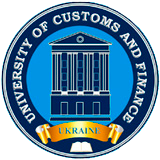LIMITED INFINITY
Abstract
The paper discusses the identification of the concept of limited infinity, highlighting its relevance in expanding the range of mathematical tools necessary for solving complex applied design tasks in technics. Limited infinity extends the applicability of classical infinity in mathematical problems. The primary objective of the paper is to develop the concept of limited infinity and conduct comprehensive research on it. The paper outlines the fundamental properties of limited infinity, elucidating its key characteristics and practical applications. An analysis of basic mathematical operations involving limited infinity demonstrates that, under certain conditions, it behaves similarly to a finite number. Furthermore, a comparative analysis of infinity, limited infinity, and sets clarifies the concept of limited infinity. To facilitate comparisons involving values represented with limited infinity, the paper proposes several comparative estimates: the absolute integral estimate, the relative average integral estimate, and the number of grid nodes of permissible errors. Additionally, the paper provides examples illustrating the application of limited infinity in practical problems such as using the quasi-constant and functional convergence methods. The introduction of the concept of limited infinity notably streamlines the utilization of various forms of infinity in applied tasks, especially when solving systems of equations with undetermined solutions.
References
2. Díaz-Chang T., Arredondo E.-H. Conceptual metaphors and tacit models in the study of mathematical infinity // International Journal of Emerging Technologies in Learning (iJET), No. 17(15), 2022, pp. 16–27.
3. Kajander A., Lovric M. “It does not exist”: Infinity and division by zero in the Ontario mathematics curriculum // Can J Sci Math Techn., No. 18, 2018, pp. 154–163.
4. Tall D. Natural and formal infinities // Educational Studies in Mathematics, vol. 48, 2001, pp. 199–238.
5. Jacquette D. Philosophy of logic. Elsevier, 2007.
6. Denis O. Global dimensional mathematics // Journal of Advances in Mathematics and Computer Science, 36(7), article no. JAMCS.72488, 2021, doi: 10.9734/jamcs/2021/v36i730378
7. Anetor Osemenkhian, Ebhohimen Fidelis, Esekhaigbe Edwin. Rational interpolation method for solving initial value problems (IVPS) in ordinary differential equations // International Journal of Scientific and Research Publications, Vol. 3, Issue 9, 2013. Av.: http://www.ijsrp.org/research-paper-0913.php?rp=P211754.
8. Lamtyugova S.N., Sidorov M.V., Sytnykova I.V. Method of numerical analysis of the problem of mass transfer of a cylindrical body with the uniform translational flow, Radio Electronics, Computer Science, Control, vol. 2, 2018, doi: 10.15588/1607-3274-2018-2-3.
9. Brazitikos S., Giannopoulos A., Pafis M. Half-space depth of log-concave probability measures // Probab. Theory Relat. Fields, 2023, doi: 10.1007/s00440-023-01236-2.
10. Al-Shamiri M.M., Rexma Sherine V., Britto Antony Xavier G., Saraswathi D., Gerly T.G., Chellamani P., Abdalla M.Z.M., Avinash N., Abisha M. A New Approach to Discrete Integration and its Implications for Delta Integrable Functions // Mathematics, 2023, 11, 3872, doi: 10.3390/math11183872.
11. Abdulhameed Qahtan Abbood Altai. Fuzzy limits of fuzzy functions // Malaysian Journal of Science, 40(3): Oct 2021, pp. 76–106.
12. Xiaodong Wang, Feng Wang. Infinity norm upper bounds for the inverse of S DDk matrices // AIMS Mathematics. No. 8. 2023. pp. 24999-25016, doi: 10.3934/math.20231276.
13. Johannes H., Jianfeng Y. Limiting distributions for eigenvalues of sample correlation matrices from heavytailed populations // The Annals of Statistics. Vol. 50, 2022, pp. 3249–3280.
14. Sergeyev Y. D. Some paradoxes of infinity revisited // Mediterr. J. Math., article no. 19:143, 2022, doi: 10.1007/s00009-022-02063-w.
15. Hijriati N., Yulianti I., Susanti D., Anggraini D. The construction of soft sets from fuzzy subsets // BAREKENG: Jurnal Ilmu Matematika dan Terapan. Vol. 17, Iss. 3, Sep. 2023, pp. 1473–1482, doi: 10.30598/barekengvol17iss3pp1473-1482.
16. Mueckenheim W. The meaning of infinity // arXiv: General Mathematics, 2004, doi: 10.48550/arXiv.math/0403238.
17. Yan B., O’Regan D., Agarwal R.P. Infinite number of solutions for some elliptic eigenvalue problems of Kirchhoff-type with non-homogeneous material // Boundary Value Problems, vol. 44, 2021, doi: 10.1186/s13661-021-01522-9.
18. Кімстач О.Ю. Проектування асинхронних двигунів малої і середньої потужності загального призначення з короткозамкненим ротором: навчальний посібник. – Миколаїв; НУК, 2015. – 188 с.
19. Кімстач О.Ю. Метод функціональної збіжності. Вісник Херсонського національного технічного університету. Херсон: ХНТУ, 2017. Вип. 1 (60) С. 11–19.
20. Chiasson John Nelson. Modeling and high-performance control of electric machines / John Chiasson. Published by John Wiley & Sons, Inc., Hoboken, New Jersey. 2005. – 709 p.
21. Çunkaş M., Akkaya R. Design optimization of induction motor by genetic algorithm and comparison with existing motor // Mathematical and Computational Applications, Vol. 11, No. 3, 2006, pp. 193–203.

 ISSN
ISSN 




